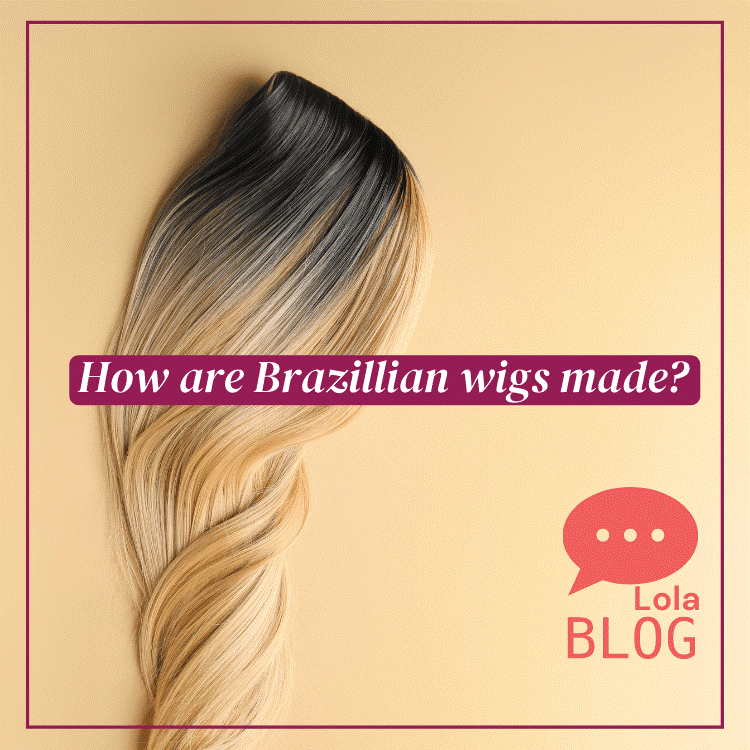
How are Brazillian wigs made?
Share
How are Brazillian wigs made?
The softness, mild shine, and thickness of Brazilian hair are indicative of its natural durability, which bears up well to a wide range of temperatures and circumstances. It's also a dark natural black, has a lustrous look and soft feel. The hair is silky and swishy and holds curls well. The texture and density of Brazilian hair are very notable.
Brazilian hair is human hair, so it should be soft, thick, and long-lasting. This type of hair is simple to style and holds certain styles well. Because of the thickness of the hair, you can easily add a lot of volume to your hairstyle without too much effort.

You may be surprised to hear that not all Brazilian wigs are made from hair sourced in Brazil. In fact, the name was more a marketing invention than an an indication of where the hair originates from. It was initially termed Brazilian hair to distinguish it from Indian hair, that was the first hair to be sold in bundles. It set the trend for other trendy names that refer to specific look and feel rather than the country of origin. In this way we have come to know Peruvian hair, Vietnamese hair, Malaysian hair and more.
Brazilian hair encompasses various factors that affect the quality, including the way the strands are aligned, the bulkiness at the top of the bundle and the sewing of the weft. The majority of the hair used to make Brazilian wigs or weaves comes from Asian countries, particularly China and India. People in countries such as India shave their hair for religious or cultural reasons, creating a substantial market for human hair. This hair is then processed and sold to make wigs and weaves available for purchase.
So how are Brazilian wigs made?
Brazilian wigs are also mostly made in factories in eastern high end manufacturing countries like India, China and Malaysia. In some countries however, they are also made, mostly by hand, by several local small set-ups in the supply chain. The manufacturing process remains basically the the same though.
Sourced, untangle, treated and sorted
The hair is sourced, mostly in the Asian countries, then untangled, treated and sorted. Bundled, one time sourced hair, makes this process easier, but in some cases, much of the hair is sourced through a process referred to as comb waste. This is not a process that is broadly publicised as many people may be put off by the thought of buying other people’s hair left-overs. Rest assured though, the hair undergoes extensive sorting and cleaning actions before it is styled and shipped.
Many long-haired women in Asia will collect the hair from their combs over an extended period of time, even years. These are then sold through a chain of local buyers to workshop where the hair is untangled by hand. This is assiduous work, highly labour intensive and a time consuming activity.
Washing the hair

The hair is them washed in hot water, measuring between 60 and 80 degrees Celsius, that has been diluted with alkaline and a special cleaning solution. The hair is then washed repeatedly to remove any impurities.
Once all impurities have been extracted, workers use a flapper to beat the hair until the roots are straight and tidy. The hair is then weighed electronically and bundled in bunches.
Next, highly skilled staff sews the strands under strong quality controlled supervision. The wefts need to adhere to a specified density, tidiness and cleanliness.
Styling the hair
Once the hair has been dried, it is beautifully and expertly texturised and styled. To achieve the lovely curl, for instance, we associate with a typical Brazilian wig, the hair is wrapped around bamboo sticks, and then placed in a sterilised closed space that exposes the wrapped hair to a set pressure and steam at a specified temperature.
After this the bamboo is removed and the hair is softened in a nutrition solution and a fixing agent. The texture is then refined by placing the hair on arranged tubes to make the curve consistent with the intended size of the curl.
The hair is then dried for three hours at a temperature of between 60 and 80 degrees Celsius. After this extensive processing, cleaning and styling the hair is packaged and ready to be transported to customers around the world.